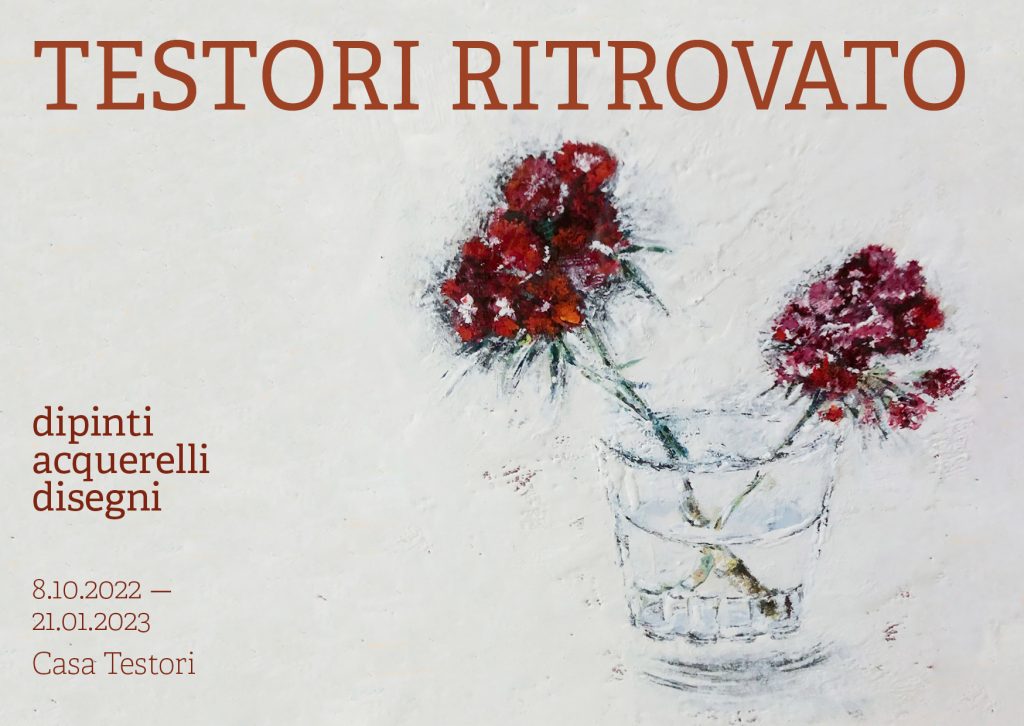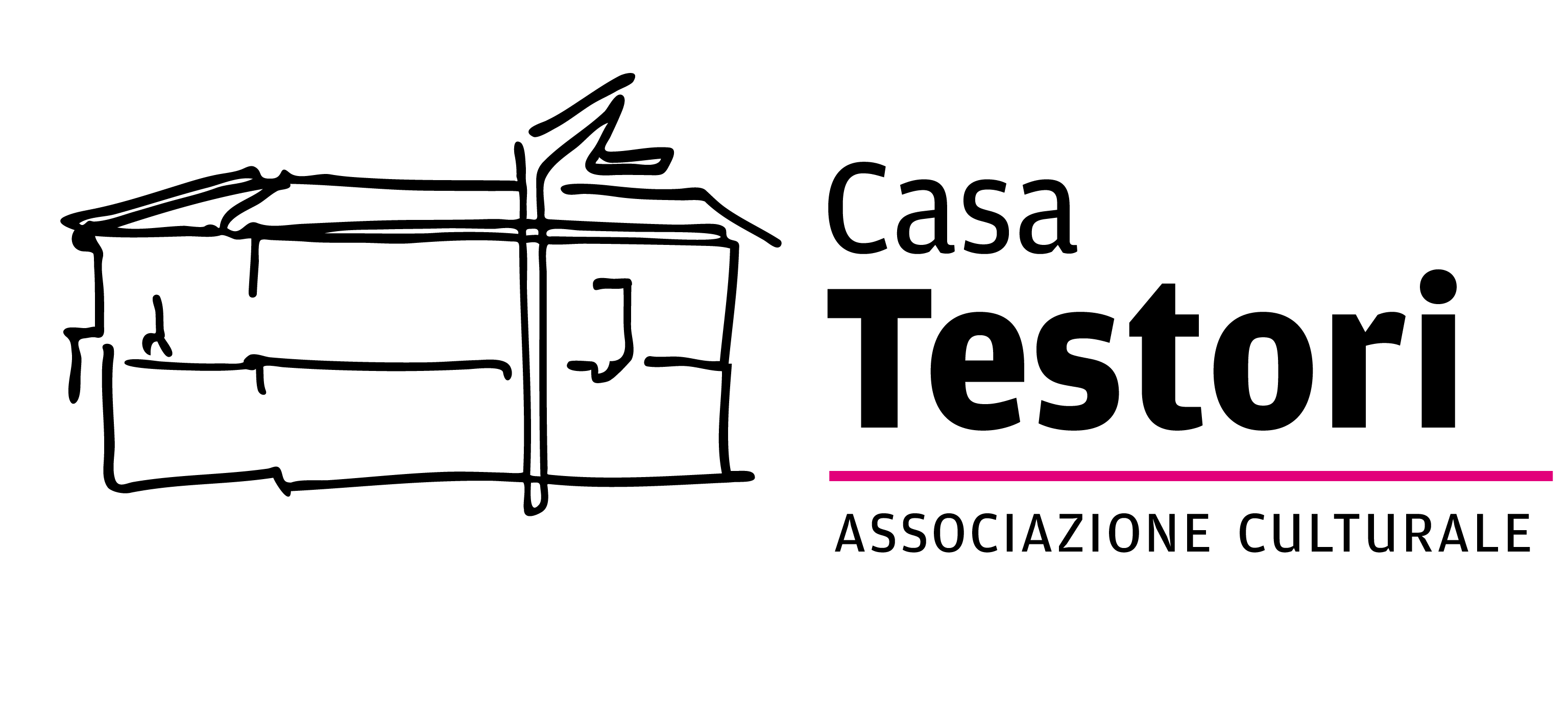TESTORI RITROVATO. DIPINTI, ACQUERELLI E DISEGNI
A project by Casa Testori
Casa Testori
Oct. 8-Jan. 21, 2023
Thursday, Oct. 27, 7:15 p.m. exhibition tour with painter Giovanni Frangi
Booking: eventi@casatestori.it

The exhibition with which Casa Testori leads us to the centenary of the birth of Giovanni Testori (1923-1993) is dedicated to his activity as a painter. After all, known as one of the most lively and controversial intellectuals, writers, playwrights and art critics of the 20th century, Testori began his tireless cultural production in the 1940s precisely as a painter, and his first critical writings were born of direct experimentation.
An extraordinary acquisition
The occasion of the exhibition is the Giovanni Testori Association’s recovery of an important nucleus of paintings and drawings that have re-emerged after twenty years of oblivion, works that will allow visitors to discover a previously unpublished Testori. The pictorial production is linked to two precise moments in Testori’s life, separated by a long hiatus away from canvases. If the first nucleus is linked to the years around World War II, between 1942 and 1949, the second, which was ignited at the end of the 1960s, spans the entire 1970s, in a dense succession of experimentation, including technical experimentation.
First floor
Following the thread of chronology, the works are arranged along the walls of the two floors of the house. On the second floor, two rooms are devoted to the 1940s: from the first landscape watercolors to the studies for the Crocifissione of ’49. A surprising succession of paintings, with which Testori participates in the formal research of a generation that must come to terms with Picasso. The room devoted to sunsets on the lake and Teste del Battista marks Testori’s return to depiction: from drawing to watercolor, to the first oils: between 1967 and 1969 thus prepares the revolution of the opening decade, to which the entire floor below is devoted.
Ground floor
From the first room, the 1970s explode, with their incredible bearing of matter: blocks of color in oil that, from the Trittico di Pugili, accompany us into the living room and veranda, in a production all concentrated between 1970 and 1971, coming down from the easel in time to be exhibited at the great exhibition at the Galatea Gallery in Turin, directed by Mario Tazzoli. In Kitchen finds space for a much-needed exploration of drawing and the carnality of the sign, works executed between 1970 and 1974, watched over by his self-portrait. To give an account of new important changes in technique, one encounters the large acrylics, mostly female nudes that are approached only by passing the great fight of the boxers, placed at the foot of the stairs. Concluding the exhibition is the unusual peace of the still lifes of 1977. Still white: the background is spread in watercolor, but spread dense and full-bodied to conceal the crackle of color still beating beneath the surface. Splendor and restlessness, as is always the case in Giovanni Testori’s work.
Forty Realism
The Testori Association preserves the most important nucleus of works created by Testori in his early painting season. A true visual palimpsest of his critical thought, in years in which Italian Realism was at the center of the cultural debate and the painters who felt they belonged to it questioned the suffering of War, the thirst for Freedom, the strength of the everyday and the specter of Picasso, master father to be crossed trying not to succumb. Years in which Testori entrusts his drawings to the GUF magazines for which he was already responsible for art at age 18. As a painter, he cut his teeth on landscape and still life in the bombed and then liberated Milan and wondered about the return of avant-garde painting in churches, arriving at the great Crocifissione, the masterpiece of those years on display in the exhibition and the last work he made before his 20-year abandonment of painting.
All Seventies
In the same decade as the great stagings at the Pier Lombardo Theater with Franco Parenti, Ambleto, Macbetto, and Edipus (1972-1976), Testori threw himself headlong back into painting, with the material oil paintings exhibited at Mario Tazzoli’s Galatea Gallery in Turin (1971), moving on to acrylic with the nudes of women presented at the Galerie Alexander Iolas in Milan (1974) and furiously wielding charcoal for the large anatomical and vegetal studies that troubled audiences at Giorgio Cardazzo’s Galleria del Naviglio in Milan (1975) and at Rome’s Galleria il Gabbiano (1976). A cavalcade in matter and at the bottom of carnal subjects that was gradually presented in the catalogue by art critics such as Luigi Carluccio and Giuliano Briganti, but also literary ones such as Piero Citati and Cesare Garboli, underlining the interweaving of literature and figuration that was so crucial for Testori.
White Testori
In the exhibition the visitor is called to a total immersion in painting, passing, from vision to vision, to the discovery of thematic assonances, through investigations that exhaust a subject or technique in a few months. Matter is for Testori the painter as for Testori the critic, and even the poet, the heart of his expressive research, which in this exhibition emerges thanks to new protagonists. Thus we discover the central role of white in the experimentation of the 1970s. It is a color that, initially denied by the drafting of large colored backgrounds, later, when the subject is completed, often intervenes to cancel them out. This is what happens in his famous Pugilatori, immersed in a matter-life rendered with blocks of color, from which the figure must emerge by force in order not to sink. It is the same white that, having lost its thickness, becomes a light mist in the acrylics, almost monochrome, of the Nudi feminili ton sur ton, to become tinged with blood red, following the bloody mutilating interventions that characterize the cycle presented by Iolas, for which Testori took care in detail of the setting up right down to the design of the frames. A white that seems negated by the deep black of graphite, laid out with impetuousness in the large papers of the mid-1970s. They are carnal male and female anatomical studies that are associated with plant elements, if possible even more carnal. Papers that appear to be huge photographic negatives with erotic subjects, which of the bodies accentuate, rather than the morbidity of vision, the inexhaustible struggle for survival. It is no coincidence that some of these works were placed at the close of the Milanese exhibition at Palazzo Reale dedicated by Francesco Bonami to the 1970s (2012) and are now at the center of an exhibition dedicated to the heretics of the twentieth century, set up these months at the Mart in Rovereto. The white, hidden by the “negative” of these papers, immediately re-emerges as a protagonist in 1977, called upon once again, as it had been at the beginning of the decade, to cancel out the colored backgrounds, often spread out in bright yellow. A white that returns clumped in watercolor in large backgrounds, imposing theatrical backdrops that allow glimpses of the barely perceptible color beneath them, and from which re-emerge domestic vegetables and flowers, described as archaeological relics cleared from the earth, or plucked animals, as if they were lying on the marble table profusely floured by a cook. A freshness and restlessness, as ancestral as it is domestic, that makes these Nature morte perhaps the most striking works in the Novates exhibition.
OPENING HOURS
Tuesday – friday: 10 a.m. – 1 p.m.; 2:30 p.m. – 6 p.m.
Saturday: 2:30-7:30 p.m.
Sunday and monday: closed








